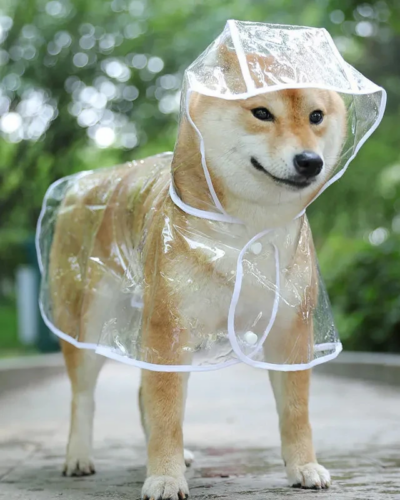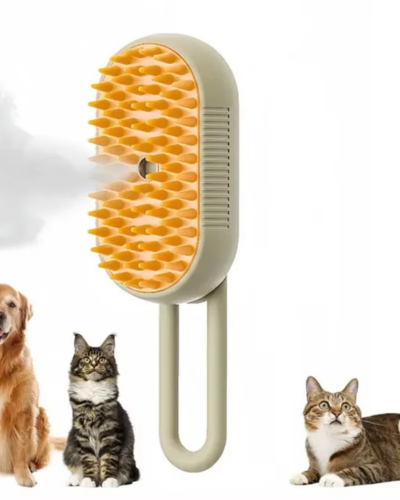Free delivery for orders over £45

Understanding Common Cat Behaviors: A Guide for Pet Owners
Table of Contents
Are you puzzled by your feline friend’s behaviour? This cat behaviour guide will help you delve into the intriguing world of common cat habits. Understanding your cat’s unique personality and actions not only enriches your connection but also enhances their wellbeing. From purring to kneading, every gesture has a story. Let’s embark on a journey to uncover what your cat is truly communicating.
Understanding Your Cat’s Unique Language
Cats communicate with a fascinating array of vocalizations, body language, and behaviours. These feline signals form a complex language that is unique to each cat but follows general patterns. Understanding this can greatly enhance the bond between you and your pet.
Vocal Communication like meowing, chirping, and growling serve specific purposes. A loud meow might indicate hunger, while a soft purr often shows contentment. However, cats also use these sounds to express discomfort or demand attention. Unlike dogs, cats can be quite selective with their vocal because each sound conveys a distinct message.
Observing your cat’s body language adds another layer to understanding its state of mind and intentions. A cat with an upright tail is usually happy and approachable, whereas a thrashing tail can signal annoyance. The position of a cat’s ears and whiskers also provides clues. Forward-facing ears and relaxed whiskers indicate calmness and curiosity.
In addition to sounds and stance, cats use scents for communication. Rubbing their face against you or furniture marks their territory with their scent glands. This behaviour not only makes them feel secure but is also an affectionate gesture for those they trust.
It’s important to consider the context of these actions to discern the true meaning of your cat’s ‘language.’ Does the cat meow when you’re on the phone, or does its tail twirl as you prepare food? Such factors can help interpret whether your cat is calling for interaction, expressing needs, or simply being sociable.
Learning this unique language helps cater to their needs and creates a harmonious living environment. Each interaction becomes more meaningful as you tune in to these subtle cues your cat uses to communicate.
Decoding the Mystery of Purring
Cats are often known for their enigmatic behaviours, and one of the most fascinating of these is their purring. While a cat’s purr is often associated with contentment, understanding it’s as simple as it seems can be misleading. Purring can happen for a variety of reasons beyond just satisfaction.
Studies show that cats might purr when they feel anxious or threatened. This self-soothing mechanism acts as a form of comfort, not unlike how humans hum a reassuring tune to themselves. Purring is also a solicitation behaviour. Cats often purr to attract the attention of their owners, communicating that they’re in need of something.
Another intriguing aspect of purring is its healing properties. Some research suggests that the frequency at which cats purr may promote healing. These sound frequencies are between 25 and 150 Hertz, a range that’s been shown to aid in healing wounds, reducing pain, and even improving joint mobility.
Furthermore, purring is a social signal, which becomes evident when kittens are nursing. Kittens purr to signal to their mother that they are fine and in good health, creating a bonding experience within the litter.
In conclusion, while purring is commonly associated with a happy cat, it’s important to understand it as a multifaceted behaviour that can indicate a variety of states. Observing the context in which your cat purrs can provide deeper insight into their emotional and physical well-being.
Why Cats Knead: A Soothing Habit
Cats have an array of intriguing behaviours, and kneading is one that stands out for many pet owners. This rhythmic action, where cats push their paws against soft surfaces, can leave many wondering about its purpose. Often referred to as “making biscuits,” this behaviour is deeply rooted in feline instincts.
From Birth, kittens knead their mother’s belly to stimulate milk production. This natural action ensures they get enough nourishment in their early days. As they grow, kneading remains a soothing activity, reminiscent of the comfort and safety experienced while nursing.
Comfort and Relaxation
Are significant reasons why adult cats continue to knead. Like a child hugging a favourite toy, cats use kneading as a self-soothing mechanism. It’s often observed in times of relaxation or when settling down for a nap.
Scent Marking also plays a role. Cats have scent glands in their paws. By kneading, they claim their territory, making a space smell familiar and secure. This subtle marking aids in creating a sense of belonging and safety.
Additionally, kneading is a sign of affection. When your feline friend kneads on your lap, it’s often an expression of love and contentment. This action indicates they feel safe and cherished in your presence.
While the behaviour might occasionally be uncomfortable, particularly if a cat’s claws need trimming, understanding its origins fosters a deeper connection with our feline companions.
The Curiosity Behind Cat Napping
Cats, known for their mysterious behaviours, exhibit unique and intriguing sleeping patterns. Understanding why cats nap can help owners create a better environment for their feline companions. Cats are quintessential nappers, often sleeping between 12 to 16 hours daily. Although this sounds excessive, it is rooted in their natural instincts.
Being predatory animals, cats are genetically programmed to conserve energy for hunting. In the wild, they need to be in peak condition to catch prey. Even though domestic cats may not need to hunt, the instinctual behaviour remains. Thus, cats spend a significant amount of time resting.
Napping also plays a crucial role in a cat’s mental health. During these rest periods, their brains process the information they’ve gathered, from environmental awareness to learning new tasks. This enhances their cognitive functions and keeps them mentally sharp.
Cats have flexible sleep patterns. While they might nap during the day, they are also known for their periods of active play at dawn and dusk, aligning with their crepuscular nature. By understanding this cycle, owners can better adapt playtimes and feedings to suit their cat’s natural rhythm.
Recognising the different nap types can also be enlightening. Light dozing allows them to remain alert to their surroundings, whereas deeper sleep stages are when cats truly relax and rejuvenate. Providing a cosy, secure place for these naps is essential in ensuring that cats feel safe and content.
Cats’ curiosity extends even into their sleep habits, as some are known to adapt depending on the behaviours of their owners. Cats can synchronize their napping patterns with their human companions, pointing to their social adaptability.
Exploring Feline Hunting Instincts
Cats are natural hunters, equipped with keen senses and agile bodies that make them perfect predators. Even domesticated felines possess these instincts, which manifest in various ways during their daily activities. Stalking and pouncing are hallmark predatory behaviours. Cats often practise these skills through play, approaching toys as they would prey in the wild.
The hunting sequence usually begins with the cat observing its environment, its ears and eyes focused intently. Using their acute sight and hearing, cats detect movement or sound, which triggers their instinct to hunt. Crouching low to the ground, they silently stalk their target, demonstrating patience and precision.Cats’ whiskers and paws play crucial roles here; whiskers help sense nearby objects while the paws allow for quiet movements. A sudden pounce follows the silent stalking, demonstrating a mix of speed and accuracy.
This innate behaviour serves more than just nutritional purposes. It also provides mental stimulation and exercise, helping to keep your furry friend in optimal health. Providing interactive toys that mimic prey can enhance this beneficial behaviour.
Even indoor cats feel the call of the wild. Through these hunting activities, they maintain their physical fitness and engage in complex exercises. Understanding this component of their natural behaviour is essential for pet owners, ensuring they meet their pets’ instinctual needs.
The Social Behaviour of Domestic Cats
Cats, although often perceived as solitary creatures, exhibit fascinating social behaviours with both humans and other animals. Domestic cats have developed unique ways of interacting with their environment and the beings around them, stemming from a history of domestication intertwined with their wild instincts.
Communication through Body Language
Cats use body language as a primary mode of communication. The position of their ears, tail, and body can convey a range of emotions from affection to anxiety. Recognising these subtle cues can enhance the bond between cat and owner, allowing for a more harmonious coexistence.
Vocal Interactions
Cats are known to be vocal, with each meow having a distinct purpose. Some cats develop specific sounds to communicate with their human companions, which can range from demanding attention to greeting after an absence. Understanding these vocalisations can help owners better meet their cat’s needs.
Social Structure and Hierarchy
When living with other cats, domestic cats typically establish a hierarchy that dictates social interactions. These hierarchies are often fluid and can shift with changes in the group dynamics. Recognizing these social structures can inform how to manage multi-cat households effectively.
Play as a Social Activity
Play is not only a means for cats to exercise their natural hunting instincts but also a way to establish and maintain bonds with both humans and other cats. Engaging in regular play sessions can enrich a cat’s life, reduce behavioural issues, and strengthen the human-animal bond.
Grooming and Affection
Cats display affection through grooming, which serves as both a hygienic practice and a social activity. Mutual grooming or allogrooming in multi-cat households can signify trust and affection, reinforcing social bonds within the group.
Being aware of these social behaviours and understanding their implications can greatly enhance pet owners’ ability to create a nurturing environment for their feline companions. Recognizing how cats express themselves socially aids in providing the proper support for a content and well-adjusted pet.
Understanding Cat Territorial Marks
Cats have an instinctual need to mark their territory. It’s a natural behaviour that stems from their wild ancestors. They use various methods to leave their scent around areas they claim as their own. Scratching surfaces is one way they accomplish this. When a cat scratches, it not only sharpens its claws but also releases pheromones from glands in their paws. This dual action signifies to other cats that the territory is claimed.
Rubbing against furniture, people, or doorways is another tactic they employ. Cats have scent glands around their face, specifically near their cheeks. When they rub, they deposit pheromones. This helps establish a safe environment, familiar to them, by marking objects or beings within their territory.
Spraying
is perhaps the least appreciated form of marking but is vital in cat communication. Many believe only unneutered males spray, but females and neutered cats may do so too. This method involves cats backing up to vertical surfaces and releasing small amounts of urine. It conveys powerful territorial messages or is a cue to potential mates.
The sense of smell plays a significant role in how cats interpret their world. Recognising these marking behaviours can help pet owners better understand their feline companions. If excessive marking becomes an issue, it could warrant attention, as it suggests stress or insecurity in their environment.
-
Dry Fast
9.99 £Original price was: 9.99 £.7.99 £Current price is: 7.99 £.
Contact Us
- +44 07391626201
- info@promotepet.com
- 16, Cromwell Close - Oxford - UK
COPYRIGHT © PROMOTE PET. ALL RIGHTS RESERVED. © 2024 Chofard Enterprise Ltd. Chofard Enterprise is a company registered in England and Wales with a company number 13073779 VAT number GB 370644889. 16, Cromwell Close, Oxford OX30RW, United Kingdom – trading as Promote Pet Online Shop.











